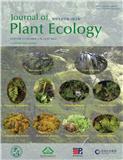
植物生态学报(英文版)(Journal of Plant Ecology) 知网目次万方目次维普目次
- CSCD
- 高T1
- 高T3
- 主管单位:
中国科学技术协会
- 主办单位:
中国植物学会、中国科学院植物研究所、中国科技出版传媒股份有限公司
- 国际刊号:
1752-9921;EISSN1752-993X
- 国内刊号:
10-1172/Q
- 学科分类:
- 字数:
16000-30000
- 有无基金:
/有基金 100.0%
- 周期:
CN外文-双月刊
- 特殊属性:
第一批认定学术期刊
- 电话:
010-62836667(官网电话)
- 邮箱:
jpe@ibcas.ac.cn(官网邮箱)
- 复合因子:
0
- 综合因子:
0
- 收录:
知网目次,万方目次,维普目次
- 级别:
CSCD,高T1,高T3
期刊简介
《植物生态学报》期刊已被查看: 次
更新频次
单位占比
一作占比
/有基金-100.0%投稿指南
1、投稿方式:在线投稿。
2、刊内网址(202403期):http://academic.oup.com/jpe
3、官网网址:http://www.jpe.ac.cn/
4、投稿系统:
https://mc.manuscriptcentral.com/jpe
5、主办单位官网:
http://www.ib.cas.cn/2019gb/chubanwu2019/
(中国科学院植物研究所)
6、官网邮箱:jpe@ibcas.ac.cn
7、官网电话:010-62836667
8、出刊日期:双月刊,逢双月出版。
2024年8月9日星期五
《植物生态学报(英文版)》Author Guidelines
【官网信息】
Aims and Scope
Journal of Plant Ecology (JPE) is a bi-monthly, peer-reviewed international journal of plant ecology, which serves as an important medium for Chinese and international ecologists to present research findings and discuss challenging issues in the broad field of plants and their interactions with their biotic and abiotic environment.
Original research articles, reviews (published under full open access), perspectives, data papers and short communications published in JPE will cover all aspects of plant ecology, including plant ecophysiology, population ecology, community ecology, ecosystem ecology and landscape ecology as well as conservation ecology, evolutionary ecology and theoretical ecology. JPE includes special issues/features focusing on frontiers in plant ecology (including global change, invasive species, biodiversity and ecosystem functioning, etc.), which may include reviews written by the leading ecologists in the field.
JPE is sponsored by the Botanical Society of China and the Institute of Botany of the Chinese Academy of Sciences and published by Oxford University Press.
Manuscript Submission
Thank you for your interest in Journal of Plant Ecology. Please read the complete Instructions to Authorscarefully prior to submission, including the section on copyright. To ensure fast peer review and publication, manuscripts that do not adhere to the following instructions will be returned to the corresponding author for technical revision before undergoing peer review.
JPE recognizes that excellent manuscripts may have been erroneously rejected by other journals. Authors are encouraged to submit such manuscripts, together with the reviews from previous peer review and an explanation in the cover letter of how the review comments have been incorporated in the submitted version of the manuscript. Such manuscripts will be assessed based on the previous reviews and a decision may be taken by the editor-in-chief without further review.
Manuscript Types
JPE welcomes five main types of manuscripts that are subjected to online peer review:
• Research Articles present original research findings and discuss challenging issues in the broad field of plants and their interactions with biotic and abiotic environment. The length of Research Articles is ideally within 10 typeset pages. The first ten pages are free of charge, and OUP will charge £150 per extra page after the tenth typeset page. See Manuscript Preparation below.
• Reviews should present timely syntheses of topical themes in a selected area of plant ecology and provide innovative ideas to inspire future research. The abstract do not need structure, and should be no more than 300 words. The main text should be written with the subject headings selected according to the content. Other parts should be referred to Manuscript Preparation below.
• Perspectives are short articles, providing synthetic overview, critical commentary, or historical perspective, primarily by eminent ecologists. Perspective papers are often invited papers, but proposals for submitting a Perspective may also be considered, and should be sent to the Editors-in-Chief.
• Data Papers present large or expansive data sets, accompanied by metadata which describe the content, context, quality and structure of the data. Data sets should be accessible and legible to every user and on every platform. Excel (.xls) is the most commonly submitted proprietary format. The content of metadata should be prepared referring to Table 1 in Michener et al. (1997; Ecological Applications 7:330–342). The peer-review process of data papers will focus on an evaluation of the ecological significance of the data and ensure a high standard of the data usability. Only the abstract appears in Journal of Plant Ecology; the data and metadata are available as online Supplementary Material. OUP can host up to 15MB of data on its journal platform. Alternatively, authors can provide a Dryad link which will be typeset into the paper, if the files exceed the limit.
Data paper should contain the following parts: Title page, Abstract (structure is not required; no more than 300 words), Introduction, Metadata content (tables and figures should be embedded in the metadata where appropriate.), Acknowledgments (be brief), References, Supplementary Material.
• Short Communications are shorter, peer-reviewed research articles, presenting new ideas, controversial opinions, “negative” results, or a new theory or concept based on existing research. Short Communication paper should contain an abstract (structure is not required; no more than 200 words), main text (may not be subdivided) and references, and no more than 6 figures or tables, combined, and is ideally published within 4 typeset pages. When submit Short Communication papers, a cover letter should clearly indicate that the paper is being submitted for consideration for the Short Communications section and explain why it should be published as a Short Communication paper.
Some other types of manuscripts, e.g. Meeting Reports or Editorials, are usually commissioned, but suggestions may also be submitted for the editors' consideration. These papers, classified as “Editorial Materials”, do not contain primary research data and thus do not undergo peer review.
……
更多详情:
https://www.jpe.ac.cn/EN/column/column179.shtml
《植物生态学报》同类植物保护期刊
-

新植物保护(英文)(New Plant Protection)(OA期刊)(国际刊号)(2027年之前不收版面费)
国际号刊-季刊影响因子0
-
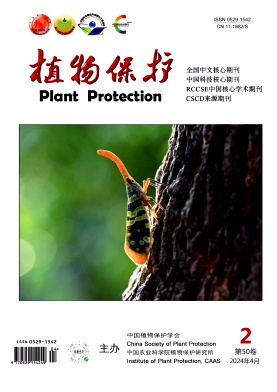
植物保护
北核,CSCD,科核,武A
CN中文-双月刊影响因子3.246
-
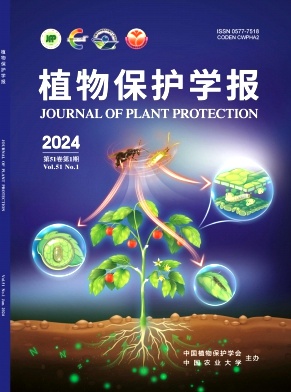
植物保护学报
北核,CSCD,科核,武A
CN中文-双月刊影响因子1.822
-
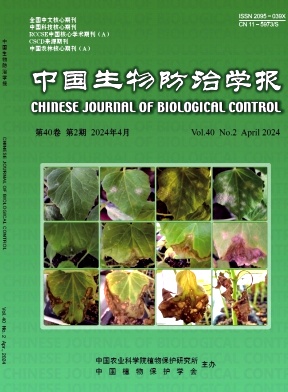
中国生物防治学报(原:中国生物防治)
北核,CSCD,科核,武A
CN中文-双月刊影响因子2.338
-

植物病理学报
北核,CSCD,科核,武A
CN中文-双月刊影响因子1.405
-
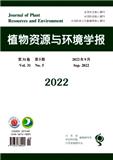
植物资源与环境学报(原:植物资源与环境)
北核,CSCD,科核,高T2,武B+
CN中文-双月刊影响因子2.142
-
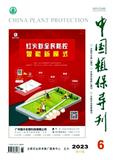
中国植保导刊
北核,武B+
CN中文-月刊影响因子1.345
-

植物营养与肥料学报
北核,CSCD,科核,武A+
CN中文-月刊影响因子4.446
常见问题
-
植物生态学报杂志社官网、联系方式是什么?
植物生态学报杂志社官网:http://www.jpe.ac.cn/
投稿网址:https://mc.manuscriptcentral.com/jpe联系电话:010-62836667(官网电话)
投稿邮箱:jpe@ibcas.ac.cn(官网邮箱) -
植物生态学报杂志是核心期刊么?
植物生态学报是核心期刊,级别是:CSCD,高T1,高T3, 是:植物保护分类下的知网目次,万方目次,维普目次收录的期刊。
-
请问你们是植物生态学报杂志社吗?
我们不是《植物生态学报》杂志社。本站主要从事期刊信息展示与期刊推荐,不是任何杂志官网,直投稿件请联系杂志社。本站仅提供免费的学术指导、论文辅导、期刊投稿信息整理收集服务。
-
你们指导服务后可以保证文章被发表吗?
期刊发表的成功与否,主要取决于文章内容的质量。编辑老师会根据研究领域、创新性等多因素进行考量。我们会帮助您理解期刊的发表要求,助力提升发表几率,从而增加发表的机会。
-
晋级论文能否在报纸上发表?
在学术界,论文的发表往往被视为研究者职业发展的重要一环。晋级论文,即为了获得更高职称或学术地位而撰写的学术论文,通常需在专业期刊上发表。然而,许多人可能会问
